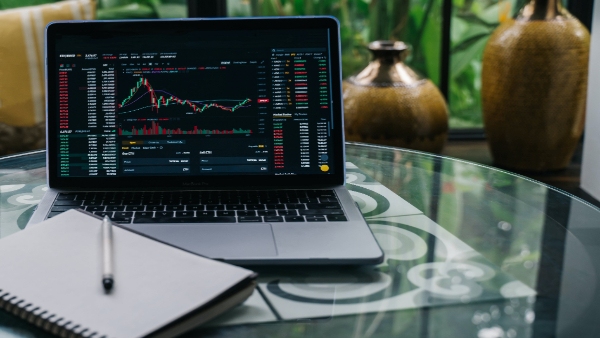Taking the leap into trading for the first time can feel a bit like standing at the edge of a diving board. You know it’s a big deal, you’ve read the basics, but there’s that question, “Am I ready for this?” With market trends always shifting and your goals to consider, a clear checklist can make all the difference.
This guide will walk you through exactly what to do before making your first trade. And yes, we’re keeping it realistic—trading doesn’t mean quitting your day job or living by your screen 24/7.
Let’s break down how to jump in smartly, manage your time, and make your first trade with confidence.
Key Points:
- Set goals based on time and risk.
- Learn your tools; platforms matter.
- Allocate a budget to start.
- Study market trends in key zones.
- Track every trade for learning.
——————————————————————————————————————————
1. Get Real About Goals and Risk

Before anything, decide on your goals and your risk limits. Know why you want to trade and how much you’re ready to risk. If it’s for quick profits, have a specific plan. But if you’re looking at it as a side hustle with room for growth, think long-term. Your goals shape your trading style—whether you’re an adventurous risk-taker or prefer playing it safe. Be honest about how much time you can invest in studying market patterns, especially if balancing a full-time job.
2. Choose Your Platform Wisely
Not all platforms fit every trader. For new traders, Binomo offers several advantages. With real accounts starting from $10 and trades from $1, the platform gives you a shot at learning without breaking the bank. Plus, Binomo lets you trade non-stop, even on weekends. No matter your strategy, a flexible platform that matches your lifestyle can make trading accessible.
3. Start Small with Budget and Expectations

Allocate a fixed amount solely for trading—preferably money you’re okay parting with. Many new traders go in with unrealistic financial expectations, so keep it real. Consider your startup funds as tuition for learning rather than betting on instant returns. This budget should allow you to experience market shifts and test your strategy without impacting your lifestyle.
| Start-Up Budget Allocation | Suggested Use |
| $50-$100 | Basic trades and platform fees |
| $100-$500 | Small trades + emergency cushion |
| $500+ | Trades plus extra for testing new strategies |
4. Study Market Trends and Key Times
For beginners, timing matters. Major markets like New York, London, and Tokyo open at certain times, bringing increased activity. Time-zone knowledge is a key part of any trade strategy. Align your trades with specific hours when you’re alert and available, which could even be on weekends if your platform allows it. Tracking trends in these active periods will increase your learning curve without requiring constant trading hours.
5. Track Every Trade and Analyze Your Moves

Keep a record of every single trade. Every gain, loss, and minor detail adds to your knowledge. Whether it’s a simple spreadsheet or a journal, a tracking system is vital. Patterns only emerge if you actively look for them. For those balancing work or school, analysis can happen on weekends or slower days when you have time to think through each trade without distraction.
FAQ
Can I trade while holding a full-time job?
Yes. Plan trades during key market hours or weekends if your platform offers that flexibility.
How risky is trading for beginners?
Every trade has some risk, but by sticking to a strict budget and avoiding emotional decisions, you can manage it.
How often should I trade as a beginner?
Aim for quality over quantity. Focus on learning patterns and trading a few times weekly rather than daily.
What are the best hours for trading?
High activity happens when markets in New York, London, or Tokyo open. Try aligning trades to these times for higher trading volume.
Starting your trading journey should feel exciting, not overwhelming. Keep your checklist close, stay sharp, and take each step thoughtfully—one trade at a time.
